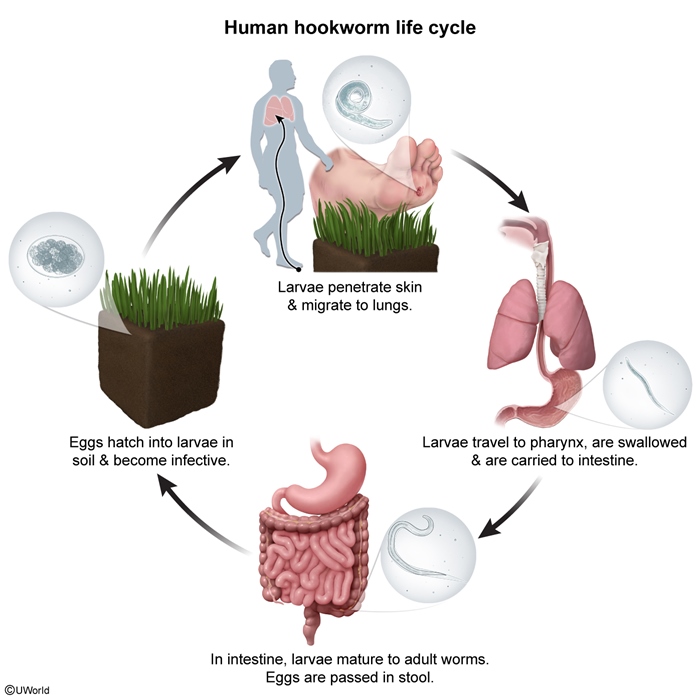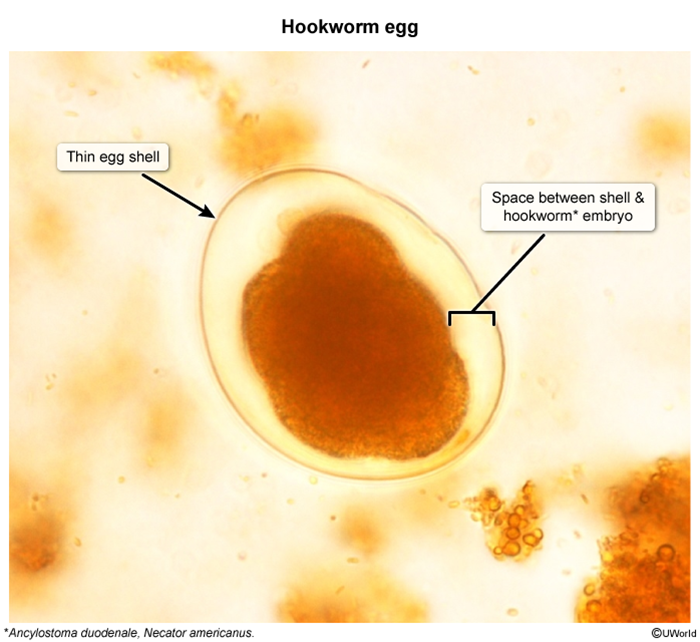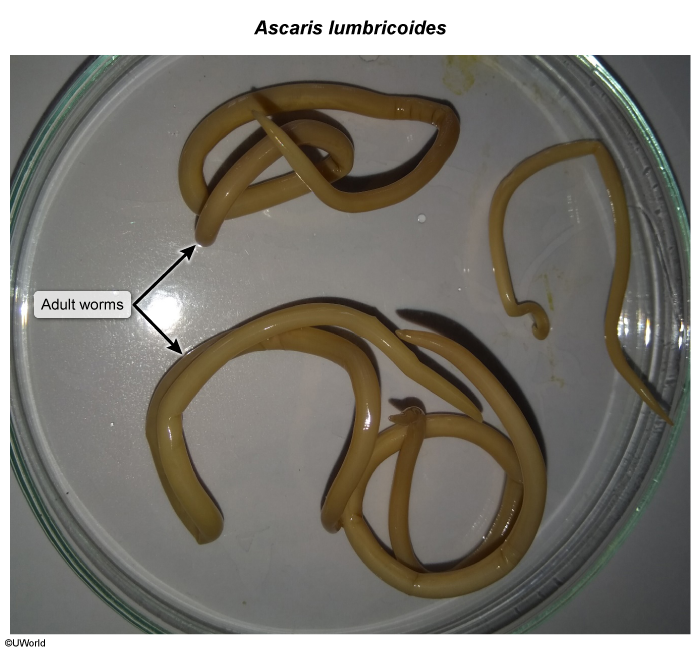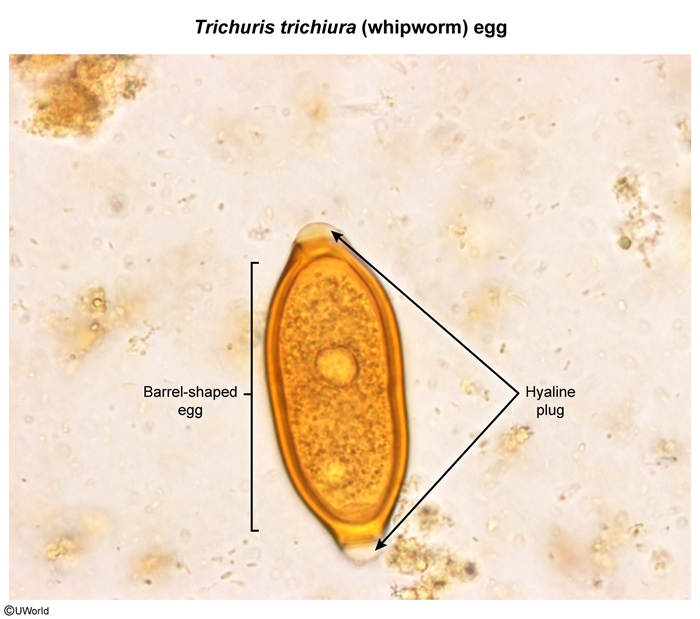Major Intestinal Helminthic Infections: Hookworm, Roundworm, Tapeworm, And Whipworm
Article Sections
Introduction
Helminthic infections (Table 1) are prevalent globally, particularly in regions with poor sanitation and limited health care access. This article focuses on some of the major intestinal infections, including hookworm, roundworm, tapeworm, and whipworm. These helminths carry a heavy disease burden and are responsible for significant morbidity, often presenting with gastrointestinal or systemic symptoms. Anthelminthic therapy is typically curative, and public health measures help reduce the prevalence of these infections, particularly in endemic areas.
Hookworm
Ancylostoma duodenale and Necator americanus are the main species that infect humans.
Epidemiology and transmissionHookworm is common in tropical and subtropical regions. Infection occurs through direct skin contact (eg, walking barefoot) with soil contaminated by human feces. Eggs in feces hatch to produce rhabditiform then filariform (infective) larvae. Once in contact with skin, these filariform larvae penetrate and enter the bloodstream, migrating to the lungs; within 2-3 weeks they travel to the pharynx and are swallowed, reaching the small intestine where they mature into adult works that attach to the mucosa and lacerate capillaries to ingest the extravasated blood (resulting in blood loss and iron deficiency anemia). Eggs are eventually released with feces (
Continue Learning with UWorld
Get the full Major Intestinal Helminthic Infections: Hookworm, Roundworm, Tapeworm, And Whipworm article plus rich visuals, real-world cases, and in-depth insights from medical experts, all available through the UWorld Medical Library.
Figures

Images



